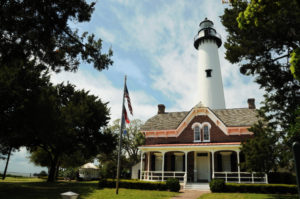There is no doubt Castillo De San Marcos would be standing today, and for centuries to come, if only for the impeccable construction of the fortress; the coastal garrison truly is a testament to the resilience of 17th century Spanish architecture. Yet the oldest masonry fort in the continental United States has had its mettle tested in the past, only to disappoint its aggressors by standing resolute time and time again.
Several things can be attributed to the fortification’s staying power: the fort’s coquina construction, its geographical location, the cannons . . . Ah, yes: the cannons. Nothing quite like a row of heavy artillery pointed down-range toward a few dozen invading soldiers to make one’s enemies second-guess why they wanted to take take the fort in the first place. Let’s take a look at the impressive defensive firepower of Castillo De San Marcos, which can still be seen on display at the fort today.

Castillo De San Marcos was designed to take a beating. According to the National Park Service, as well as the many volunteers that can be seen on the grounds of the fort during regular visiting hours, the coquina itself was the defining feature of the wall’s endurance. Spanish for “small shells,” the material allowed bombardment from heavy fire and artillery only to absorb the impact of the blasts. This effective wall construction allotted soldiers in the fort the valuable time necessary to prepare defensive attacks through the use of their cannons.
When taking a tour of the fort today, you might notice a beautiful grassy area on the west side of the fortress, perfect for an afternoon picnic, pictures, or just to lay back and take in some midday sun. Had you been doing any of these things during the Siege of Saint Augustine in 1702, you most likely would have ended your day with a one-time introduction to an eighteen-pound cannonball.
That’s because the large grassy slope situated between the west side of the fort and Florida State Road A1A is actually a glacis, which according to about.com is “an artificial slope outside of a fortress which forces attacking troops to remain under fire until reaching a ditch or moat near the walls.” English troops – like those involved in the first siege of the fortress during the early eighteenth century – would have found it nearly impossible to advance to the outer walls while moving up this steep-sloping hill, putting them at an angle that would have placed the firepower of the Castillo’s cannons directly in front of them.

According to “The Siege of Saint Augustine in 1702,” the fort’s strength while under siege relied on a combination of several factors, but there is no question that the artillery played a vital role. The sixteen and eighteen-pound cannons were extremely effective in holding off the invading English troops long enough until Spanish relief by sea could arrive.
When touring the fort today, one can’t help but notice the simple yet methodical layout of the fort’s firepower atop the coquina walls, which is still on display. In fact, volunteers at the fort, dressed as colonial soldiers and manning the cannons, put on primitive weapons demonstrations several times a week throughout the entire year. The annual schedule usually consists of five different cannon firings each day on Fridays, Saturdays, and Sundays, but it’s always a good idea to call ahead of time and make sure that they’re still on for the day.
It truly is worth a visit to the fort just to check out this amazing demonstration. There’s nothing quite like the sound of cannon fire ringing in your ears to top off an afternoon stroll of St. Augustine’s Historical District.

For more information on the National Park Service click here.
For a schedule of events at Castillo De San Marcos click here or call 904-829-6506 (or 6507) extension 234.



